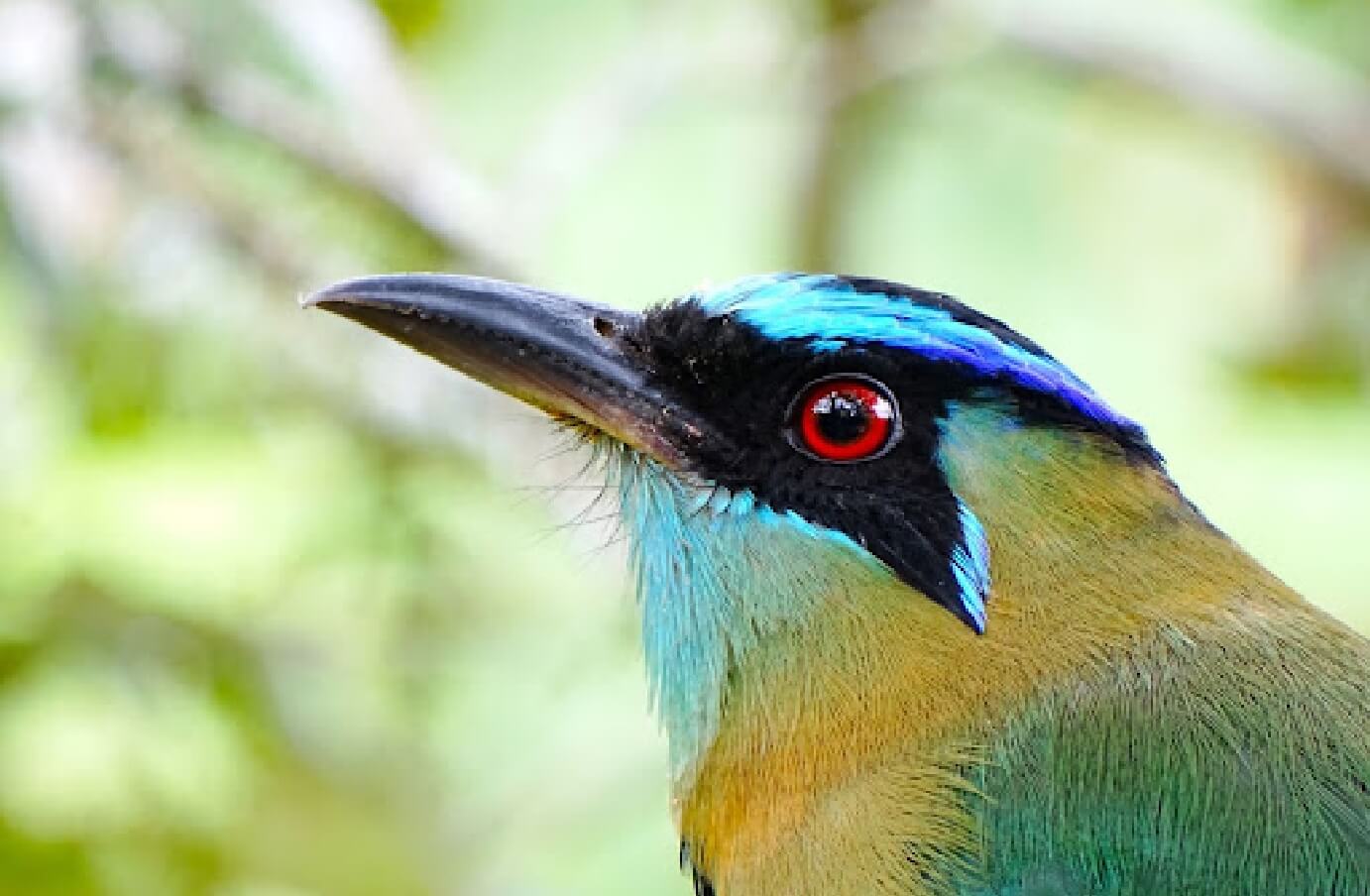The motmot is one of the most beautiful birds of the neotropics. But where did it get its interesting name?
You could say that the bird named itself in a way. Its call consists of two “hoots” in a row, sounding almost like an
owl. The bird’s first observers described this as sounding like, “motmot,” — this became the colorful
birdie’s name.
Motmots don a plumage as exotic as their habitats. Their dazzling feathers display in just about every color of the
rainbow. There are 10 different species of this bird, each with a unique array of hues. The species range in size — the
smallest being the tody at about 30 grams, and the largest being the blue-crowned, weighing about 125 grams.

Most of the motmot species have the same distinguishing tail; long with a paddle-shaped tip. It was initially thought
that the thinned section of the tail is a result of purposeful preening. However, recent studies have disproved this
theory after finding these feathers are loosely attached and shed naturally.
Their tails serve in both sexual selection and defense. Although female and male motmots are monomorphic (almost
identical), males tend to have slightly larger tails.
Scientists have documented instances of motmots swaying their tales, similar to a pendulum when a predator is near. This
is thought to be a signal from the bird, letting the predator know it’s seen and that the motmot is prepared to make an
escape. A beneficial move for both the motmot and its predator; no energy is wasted over an unsuccessful pursuit.

You can see a resemblance to their closest relatives, kingfishers, todies, and bee-eaters. All of these birds are in the
passerine family and have similarly large bills. These oversized bills are crucial for their omnivorous diet.
The birds munch mostly on invertebrates (spineless creatures). This includes worms, caterpillars, spiders, millipedes,
beetles, and small lizards. However, the bird doesn’t turn down an occasional meal of tropical fruit. They have even
been spotted in Nicaragua and Costa Rica, chowing down on poison dart frogs! When they catch their prey, motmots
typically slam it into a hard surface to stun or kill it before gobbling it up.
Being the wise hunters they are, motmots have adapted a technique to optimize their craft. Observers have witnessed the
bird following lines of army ants; the ants leave behind a path of disturbed insects. When the insects have surfaced and
are vulnerable, the motmot snatches them from the earth with its razor-sharp beak.

Their habitat is bound to the woodlands of Middle America. It reaches north, from Mexico, and as far south as Columbia
and Bolivia. Motmots spend most of their time in the provided shade of forests, jungles, and coffee farms within these
locations.
During the fall months, this region’s rainy season, motmots and their mates take advantage of the softened soil. They
collaborate to build intricate tunnels for nesting, which typically reach up to 14 feet long. When their nests are
complete, the birds will take off for a few months and return for breeding in the spring.
The motmot is a monogamous bird with at least one species (blue-crowned) that mates for life. Parental responsibilities
are shared by parents until the young are mature enough to leave the nest — after about 30 days. They’re highly social
birds and typically nest in colonies of up to 40 pairs.

